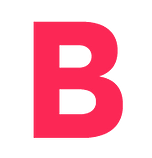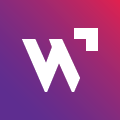When Healthcare seamlessly shares highly sensitive data like our banks do, it will radically reduce the pain and frustration of being a patient.
by Lindsey Mosby, Caroline Bone, and Viral Shah
 Both financial data and health data require the highest levels of security and privacy. Heavy regulation ensures that this type of information is as secure as possible. In principle, that’s a good thing. No one wants their medical profile out there for all to see.
Both financial data and health data require the highest levels of security and privacy. Heavy regulation ensures that this type of information is as secure as possible. In principle, that’s a good thing. No one wants their medical profile out there for all to see.
But the experience of that safe and secure data exchange, between healthcare and finance, is dramatically (and we do mean dramatically) different. Banks, credit card companies and other financial institutions are able to navigate these barriers to talk to one another, making it easier for customers to coordinate payments and understand their overall financial wellbeing. So why can’t patients, doctors, payers and insurance providers do the same for health data?
The Health Insurance Portability and Accountability Act of 1996 (HIPAA) was passed with the good intentions of keeping personal identifiable information out of the wrong hands. However, these same regulations also block health information from being shared within the right hands, at the right time. Extended care ecosystems — consisting of family, caregivers, payers, doctors, institutions and providers — would benefit from access to this data to better coordinate care for patients. Instead, this burden often falls to a patient and, if they have one, a family member or friend helping to care for them.
From products that would alleviate the burden of coordinating care, to advancements in health research, here are just a few ways designers can look to finance as a model to help bring the healthcare sector up to date.
In order for patients to be good advocates for their own care, they need to be provided with the right tools. However, for those navigating the system right now, the tools are not evolving at the same pace as the financial or consumer markets. This leaves patients stuck in endless paperwork and outdated systems, responsible for recording, remembering and communicating their full medical history. This may not seem like such a big deal for healthy people that don’t interact with the system much, but it can become overwhelming for those with chronic illness who have to become their own advocates. When the healthcare sector embraces secure, but open, data sharing, it will unlock a spectrum of new health service opportunities.
Much like healthcare, the finance industry has a vast trove of complex data spread across countless interactions overtime. Nevertheless, finance has found ways to both protect and simplify the aggregation and consumption of data through a series of consumer-facing tools. The credit score is perhaps the most ubiquitous. By calculating data from consumer credit reports, the FICO score puts a number to individual’s credit worthiness, allowing users to quickly prove to those they interact with that they will responsibly service their debt or stay current on their financial obligations. With the use of this score, consumers are able to purchase or rent homes or automobiles, open up credit cards, or finance the purchase of other big ticket items like laptops, televisions or furniture.
Since the credit score was first established in 1989, many more user-friendly financial tools have arisen to help people take control of their financial data. One such example is ClarityMoney, an app that tracks spending habits and offers recommendations on how to best manage personal spending. The app recommends credit cards that can save the user money, and even highlights all recurring subscriptions, allowing the user to cancel any they may not be using with a simple click of a button. Few tools like these, powered by comprehensive personal data, exist in the healthcare space today.
Banks have been utilizing image-recognition technology software for mobile check deposit and secure routing to ensure efficient access and distribution of funds for years now. In addition, advancements in blockchain technology are also opening up many different possibilities for the exchange of protected information in fields beyond finance. Take a look at what’s happening in home security. When the healthcare sector embraces these new and emerging technologies, we will see real advancements in sharing, maintaining and utilizing personal health data, through to making leaps and bounds in broad-based medical research.
Not all patient data needs to be personal in order to be valuable. For years, the finance industry has collected anonymized data to track patterns and provide targeted offerings to consumers, even before the customer realizes what they need. And with the rise of emerging technology, there are unprecedented opportunities to learn from new sources of data. Noting the rise of digital banking and social media, Lending Club adjusts their risk-worthiness of consumers in part by how quickly users fill out their online application, what time they fill it out, and the makeup of the social media networks. When larger pools of anonymized data around diagnosis and symptoms are made available in the same way, we will see real opportunities for tangible medical breakthroughs. The sharing or crowd sourcing of diagnoses and symptoms will most certainly be useful for those dealing with chronic illness. Activating this data will inevitably open up new possibilities for treatment advancements.
Today, the free flow of personal financial data is so seamless that purchases can be made from almost anywhere in the world with just a thumbprint or tap of an app. But in the healthcare sector, getting medical records from one physician to another may require a patient drive to the facility, provide proof of identity, pay a service fee, fill out paperwork, physically pick up the data and bring it to their next appointment. If it were this cumbersome to share financial data, the entire economy would be paralyzed.
When we open up communication, clinicians are able to collaborate by seeing notes from other doctors, cross-referencing medications, reviewing lab and test results, and observing changes in symptoms over time, delivering true, coordinated care. Patients will no longer be burdened with recording and describing health histories across multiple providers and (often) over long periods of time. PicnicHealth is one company already offering medical record management using an e-signature to request permission to access health records, including all doctor’s notes, prescriptions, lab results, X-Rays etc. Let’s take it one step further by incorporating data from patient’s own health or fitness trackers as well to create a fully connected care ecosystem.
For both patients and providers, knowledge is power. This means that as designers and strategists, it is crucial to find a way to optimize access to health data, while maintaining the highest levels of security and privacy. Using human-centered design for complex healthcare challenges can lead to data solutions that securely flow from one entity to the next, increasing convenience, advancing medical knowledge, improving (and saving) lives and, most certainly, our sanity.
Creative Art Direction by Anagraph. Illustration by Rune Fisker.

